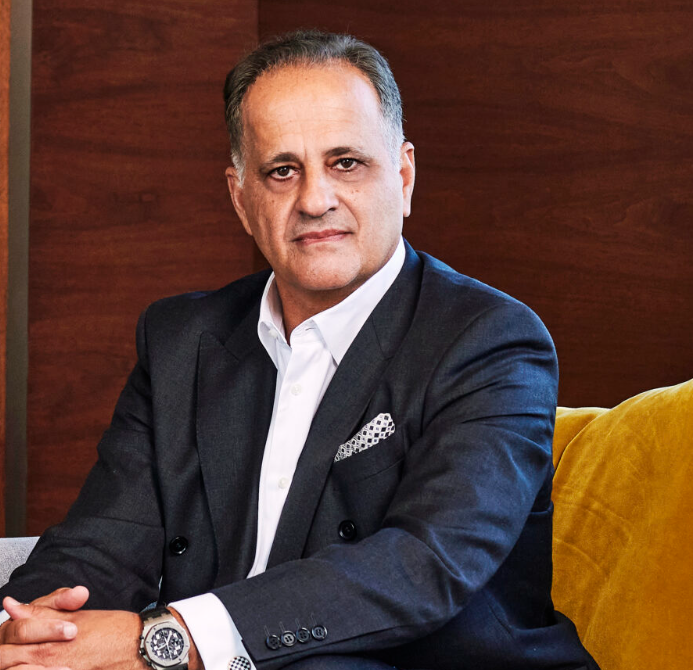Ivan Nikkhoo has worn a lot of hats. He co-founded a technology consulting firm, served as a software executive, worked in Wells Fargo’s technology investment banking division and was a managing director at boutique merchant bank Siemer & Associates.
Over the course of his 30-year career, he noticed a recurring problem with SaaS companies, leading him to found Navigate Ventures to provide a solution.

The problem? “When people came to me for growth capital, they were all too early. They wanted to raise $30 million to $60 million and needed another six or nine months before they were ready to raise it,” he explains.
“It became such a common problem I started to look into it. And then we learned that over 65 percent of companies that raise seed and Series A fail post-Series A. If you look behind it there’s very quantitative measures as to why, so we decided to solve that problem.”
Navigate’s solution is to “bridge the growth capital gap.” The firm’s name was inspired by his travels and how his firm helps “navigate you from A to growth.”
Based in Beverly Hills and founded in 2018, Navigate closed its debut fund at $30 million in late 2022 and built a portfolio of 26 investments across B2B and enterprise SaaS companies. (Read VCJ’s coverage of Navigate’s Fund I here.)
Among its representative portfolio companies are Fama Technologies, a developer of software used to screen social media to turn identity data into actionable insights; Barn2Door, an enterprise software developer designed for agricultural business management; and Operative Intelligence, a developer of customer analytics software for call centers that Nikkhoo says is exactly the kind of company Navigate looks for.
Operative Intelligence has “a team that understands the problem they’re solving, the industry they’re in, they’re using the latest tools and technologies and they’re getting to commercialization quickly,” he explains. “We’re not looking for people that have a solution looking for a problem. We’re looking for people that understand a problem really well and understand how to solve it efficiently.”
Navigate is currently raising its second fund targeting “around $75 million” and plans to invest in a similar number of companies. It declined to share the terms of the fund or the names of its LPs, but did say it primarily raises from high-net-worth individuals and family offices.
Nikkhoo says the main reason so many SaaS companies fail between Series A and growth-stage rounds is that the average time between rounds has jumped significantly. That observation led him to develop his “Series A extension” thesis.
“The average time for pre-seed to seed, or seed to Series A rounds, is about 20 months, while Series A to growth is 33 months, so they just run out of cash,” Nikkhoo tells VCJ. “So we proactively identify the best enterprise SaaS companies outside of Silicon Valley with at least $2 million to $3 million in ARR, we talk with the investors and say, ‘Well, this one has nine months of runway; why don’t we make it 18 months?’”
Navigate builds a small extension round alongside the Series A investors using their pro-rata rights, giving the company extra time to hit the performance metrics that growth investors are looking for. Once those benchmarks are hit, Navigate uses its network to find growth investors, with the goal of exiting the deal by selling its shares to the growth investors.
“We sell those shares on the secondary market to the growth investors who come in,” Nikkhoo explains. “The Series A investors that are already in cannot get out [because] that’s negative signaling, but we are known for this strategy, so it’s not negative signaling. So [the growth investors] come to us, same term sheet, same time, same terms and conditions, same valuation and we’re out.”
“We have a short holding period,” Nikkhoo adds. “We have a pretty accelerated path to DPI and our return profile is pretty consistent.”
He declined to share performance metrics from Fund I. Navigate has said its typical holding period is two to four years.
Nikkhoo calls his strategy a win for everyone involved. The companies get the opportunity to grow past Series A, the growth-stage investors get solid deals and Navigate is able to generate DPI quickly for its LPs, he says.
Why aren’t other firms pursuing a similar strategy? Nikkhoo cites three reasons.
“One, you have to have deep, deep domain expertise, and I’ve been doing this for 42 years,” he says. “Two, you have to have both sets of relationships, seed and early-stage as well as the growth, since you’re in the middle. Three, the checks are small, the funds will never be big; most fund managers are happy being an asset aggregator and living off of their fees.”
Nikkhoo also notes that Navigate’s use of the secondary market is one that many in the venture ecosystem still don’t fully understand, though he believes that will change.
“Secondaries are going to become a lot more important,” he tells VCJ. “Most people think that secondaries are when you go and buy at one of these auction places and don’t [understand] what it is. I think because liquidity is such an issue, you need to create more optionality for liquidity, and secondaries are here to stay and grow because it’s another option, not only for the LPs but for the GPs as well.”
